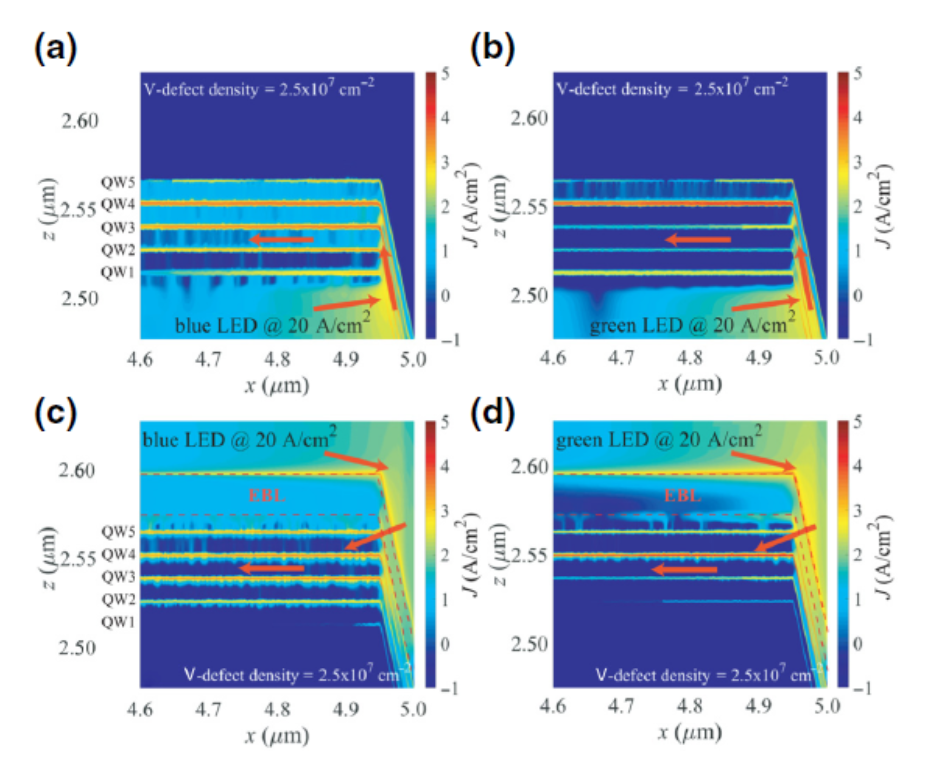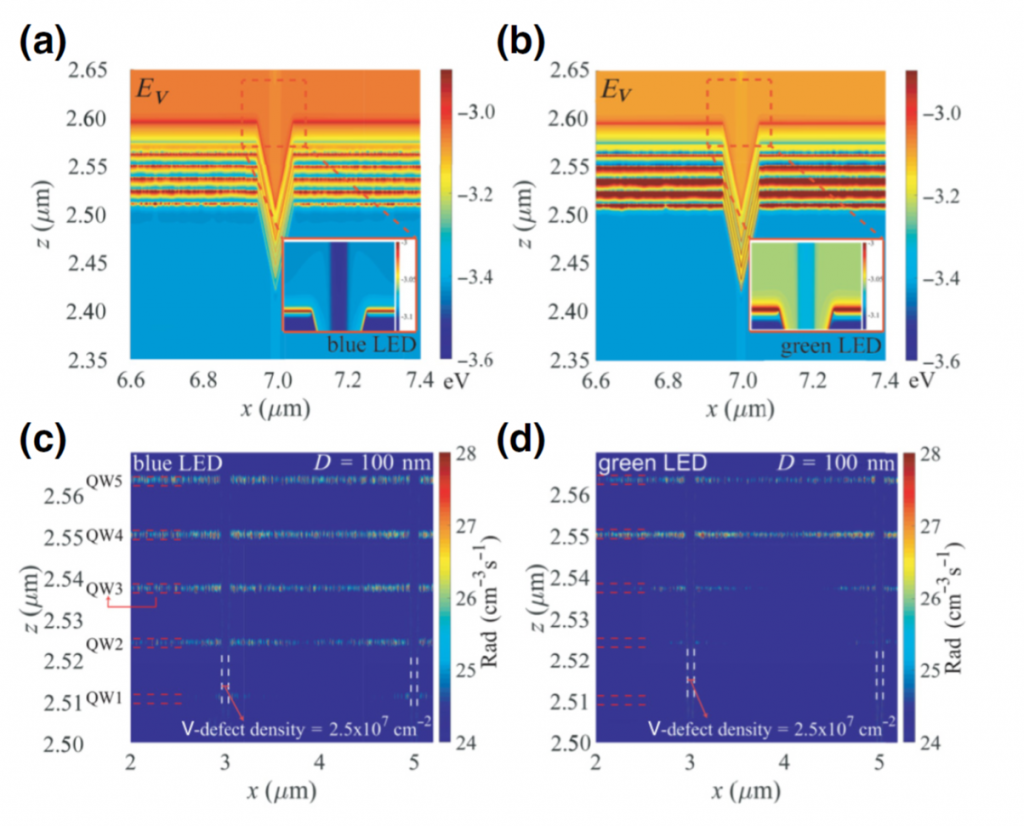Efficiency and Forward Voltage of Blue and Green Lateral LEDs with V-shape defects and Random Alloy Fluctuation in Quantum Wells (何承翰)
Cheng-Han Ho, James S. Speck, Claude Weisbuch, Yuh-Renn Wu
Phys. Rev. Applied 17, 014033, 2022
For nitride-based blue and green light-emitting diodes (LEDs), the forward voltage Vfor is larger than expected, especially for green LEDs. This is mainly due to the large barriers to vertical carrier transport caused by the total polarization discontinuity at multiple quantum well and quantum barrier interfaces. The natural random alloy fluctuation in QWs has proven to be an important factor reducing Vfor. However, this does not suffice in the case of green LEDs because of their larger polarization-induced barrier. V-defects have been proposed as another key factor in reducing Vfor to allow laterally injection into multiple quantum wells (MQWs), thus bypassing the multiple energy barriers incurred by vertical transport. In this paper, to model carrier transport in the whole LED, we consider both random-alloy and V-defect effects. A fully two-dimensional drift-diffusion charge-control solver is used to model both effects. The results indicate that the turn-on voltages for blue and green LEDs are both affected by random alloy fluctuations and V-defect density. For green LEDs, Vfor decreases more due to V-defects, where the smaller polarization barrier at the V-defect sidewall is the major path for lateral carrier injection. Finally, we discuss how V-defect density and size affects the results.


